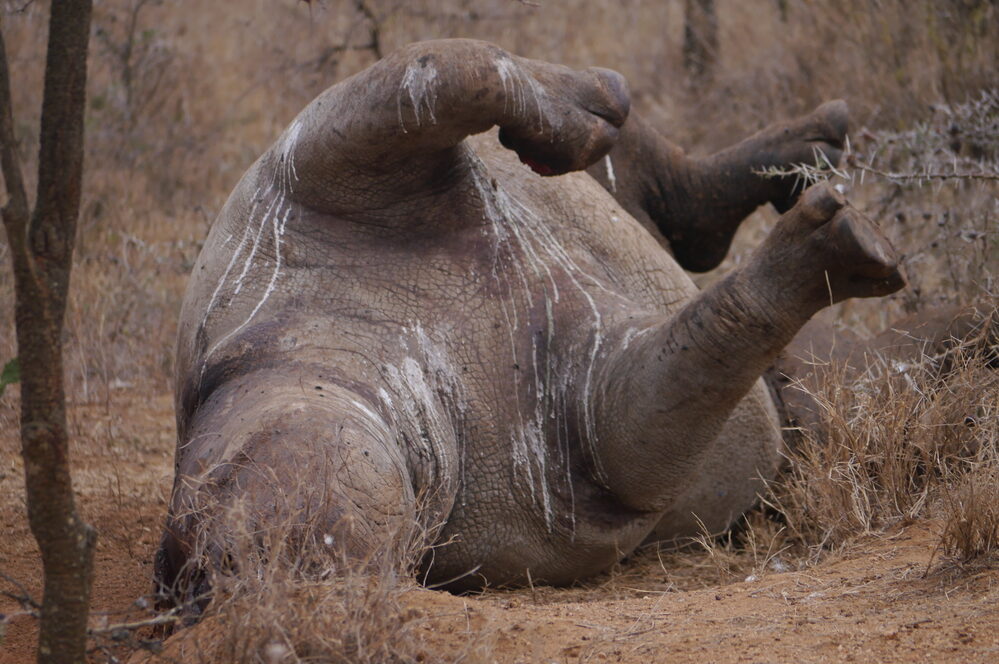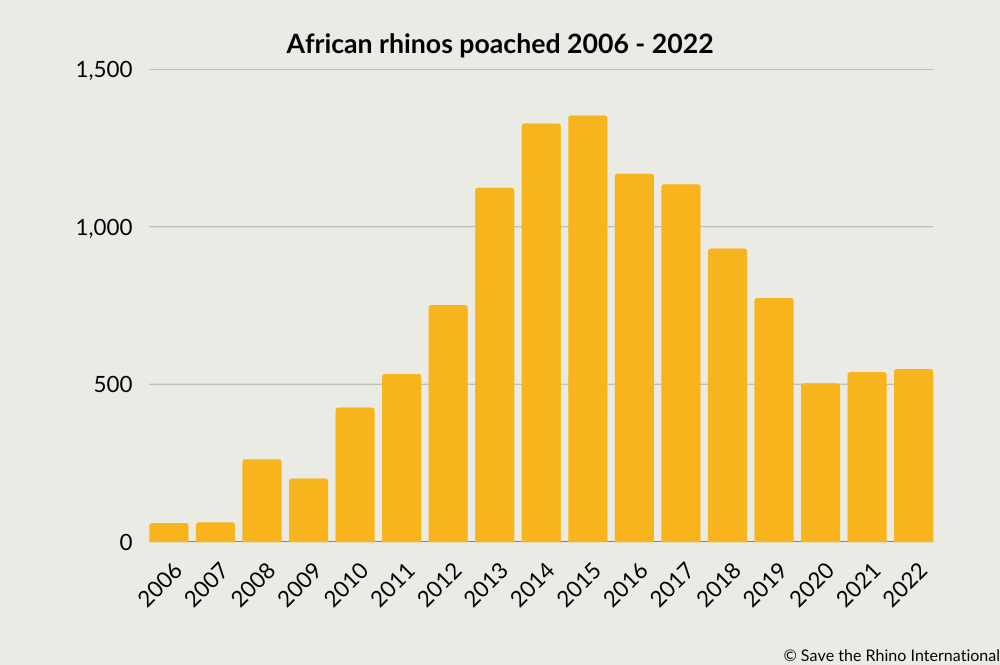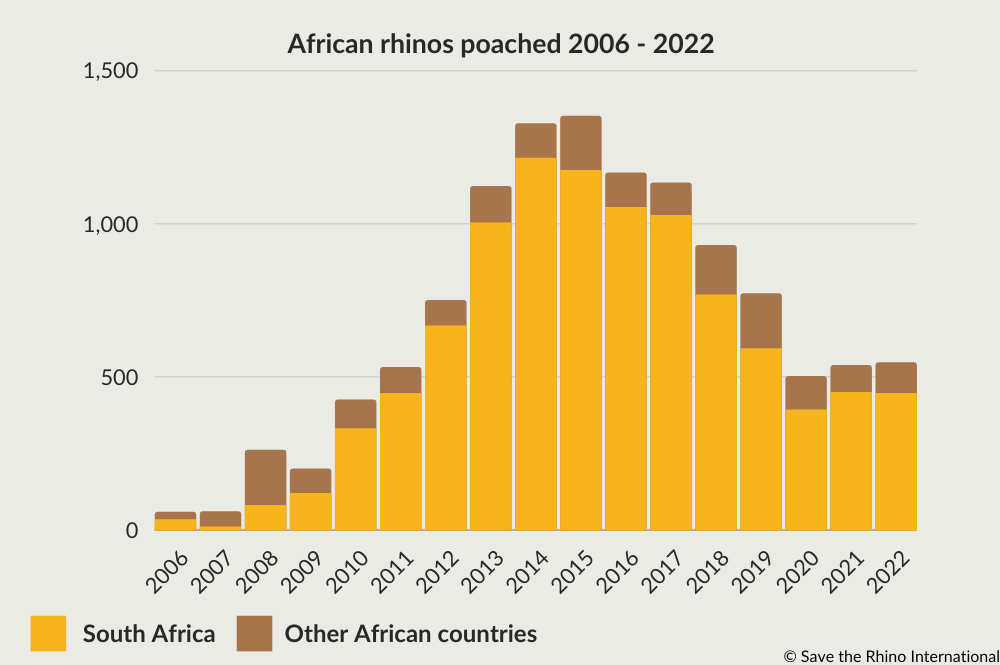The latest reports from national governments and agencies reveal (so far) that approximately 548 rhinos were poached in Africa last year. Overall, the total is a slight increase compared to 2021, when 539 rhinos were poached. This is a significant change from 2013 – 2017, when more than 1,000 rhinos were killed each year, yet it’s still dangerously high. On average, one rhino is still poached every 16 hours.
Most of the rhinos poached last year were killed in Namibia and South Africa. In both countries, poachers have shifted their focus to new places.
Tragically, poaching in Namibia almost doubled last year: 87 rhinos were killed in 2022 (up from 45 the year before). More than half of all these incidents took place in Etosha National Park, which is one of Namibia’s flagship parks and a tourism hotspot. Unfortunately, reports suggest that corruption within Etosha may have played a role. Following an attack that left 11 of Etosha’s rhinos dead in June 2022, the Namibian Government stated that it was investigating some of its employees. Outside of Etosha’s boundaries, poaching cases were spread across the country. Thankfully – and testament to the importance of communities in conservation – no rhinos were poached in community conservancies.
Since the poaching crisis began in 2008, South Africa’s Kruger National Park has suffered huge losses. Between 2017 and 2021 alone, more than 1,700 rhinos were poached in Kruger. Despite this distressing total, poaching in the Park has been on a downward trend in recent years. In 2022, however, there was a big fall, with 41% fewer rhinos poached. Most likely, there were two contributing factors for this: the plunge in Kruger’s rhino population in recent years, and an integrated approach to increasing security and tackling poaching networks operating in the Park.
Disappointingly, the decline in Kruger didn’t correspond to a similar drop nationwide. The number of rhinos poached in South Africa barely changed. A total of 448 rhinos were killed last year, compared to 451 in 2021. The province of KwaZulu-Natal (KZN) was heavily targeted, with 244 poaching cases. People protecting KZN’s rhinos faced one of their toughest years of poaching intensity. And this happened off the back of the Covid-19 pandemic, which pushed resources to their limits.
In Zimbabwe, whilst the overall number of rhinos killed declined in 2022 (according to the media reports), there was a similar pattern regarding shifting locations. Six of the seven rhinos poached in the country were killed in Matobo National Park. This is the highest number of rhinos poached in the Park in eight years.
In contrast to Namibia, South Africa and Zimbabwe, Botswana reported fewer poaching cases in 2022. Yet, the overall picture remains worrying. More than 140 rhinos have been poached in Botswana since 2018. In a country with (as of 31 December 2021) approximately 265 rhinos in total, this is huge. A recent estimate shared that in the past five years, the country has lost around one-third of its rhino population to poaching.
Thankfully, recent reports have also included positive news. Kenya – where almost 250 rhinos have been killed since 2006 – recorded a zero-poaching year in 2022. It’s the second time in three years that the country has kept all its rhinos safe. There will certainly be lessons to learn from Kenya’s success, especially as it’s home to the world’s third-largest rhino population.
Following a steep decline from 1,134 in 2017 to 503 in 2020, annual poaching across Africa now seems to be hovering at around 540 incidents. Of course, we must acknowledge the significant change, but this doesn’t mean rhinos are safe. In many places, populations are struggling to remain stable, let alone recover from more than a decade under constant attack. We must keep learning from successful interventions and boost all efforts to stop these devastating losses until no rhinos are poached, on any day, anywhere.











